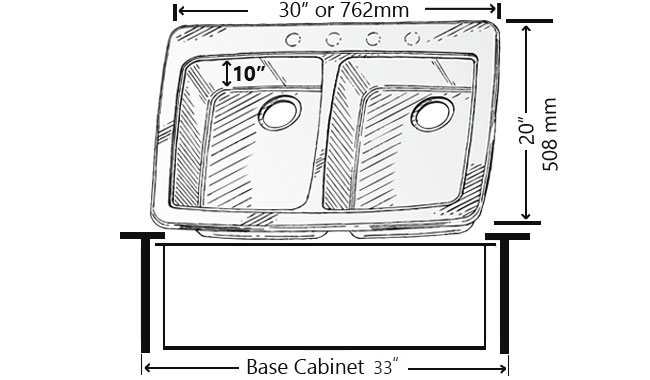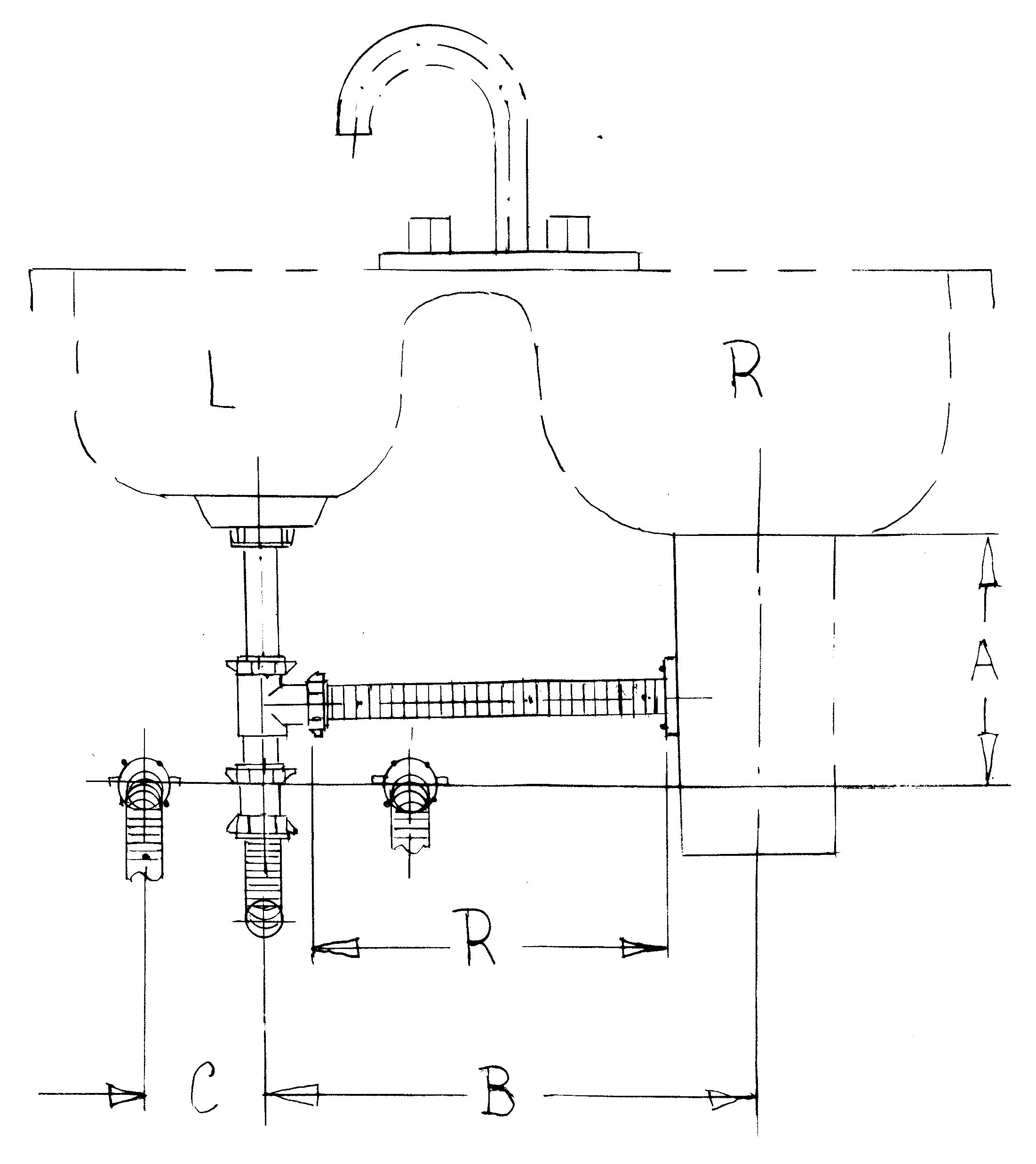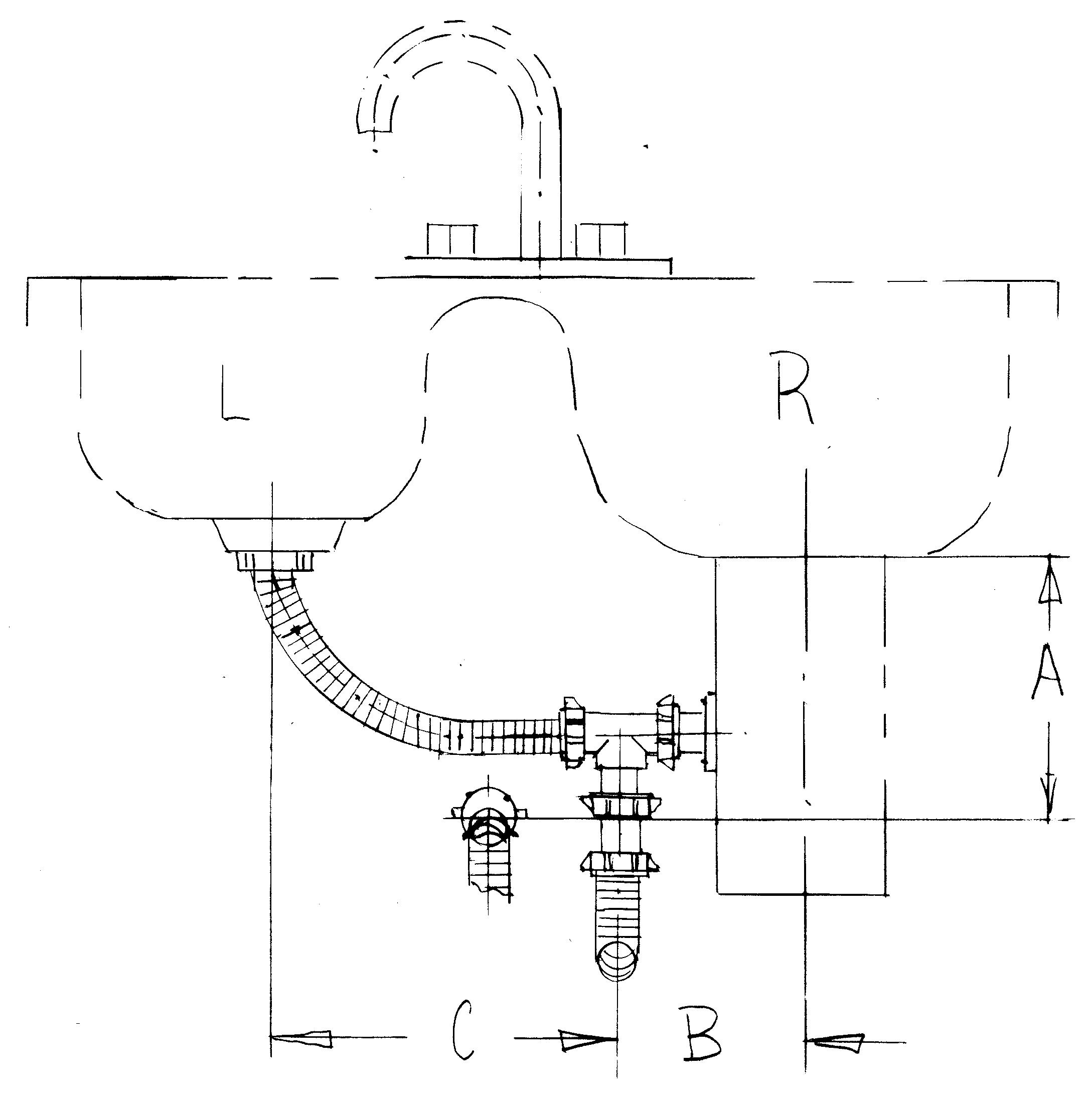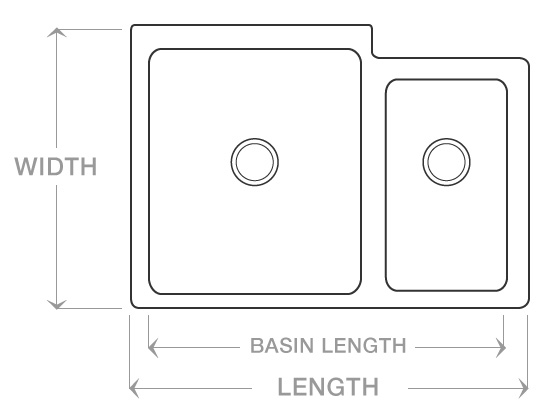Understanding Common Kitchen Sink Sizes
The kitchen sink is a central fixture in any kitchen, serving as a hub for cooking, cleaning, and food preparation. When renovating or designing a kitchen, selecting the right size sink is crucial for both functionality and aesthetics. There’s a wide range of kitchen sink sizes available on the market, each catering to different needs and preferences. Understanding the common kitchen sink sizes can help homeowners make informed decisions when choosing the perfect sink for their kitchen.

Standard Sizes and Dimensions
Standard kitchen sinks typically come in sizes that fit into standard cabinet sizes. The most common dimensions for a kitchen sink are 22 inches long by 30 inches wide. However, variations exist, with widths ranging from 16 to 24 inches and lengths ranging from 22 to 30 inches. These dimensions are suitable for most kitchens and offer ample space for everyday tasks such as washing dishes and preparing food.
In terms of depth, kitchen sinks typically range from 8 to 10 inches deep. A deeper sink can accommodate larger pots and pans and prevent splashing, while a shallower sink may be more comfortable for shorter individuals or those who spend extended periods standing at the sink. It’s essential to consider personal preferences and ergonomic factors when selecting the depth of the sink.

Large and Oversized Sinks
For homeowners with larger kitchens or those who frequently entertain or cook for large gatherings, oversized sinks may be a preferred option. Oversized sinks typically have dimensions larger than the standard sizes, offering more space for washing dishes and preparing food. These sinks may measure 30 inches or more in length and 24 inches or more in width, providing ample room for multitasking in the kitchen.
Additionally, large sinks are ideal for homes with oversized cookware or for individuals who prefer the convenience of a single, spacious basin. However, it’s essential to ensure that the sink’s size is proportional to the kitchen and countertop space available to prevent overcrowding and maintain a balanced aesthetic.

Small and Compact Sinks
On the other end of the spectrum, compact sinks are suitable for kitchens with limited space or for secondary sinks in areas such as kitchen islands or wet bars. These sinks typically have dimensions smaller than the standard sizes, with widths ranging from 14 to 18 inches and lengths ranging from 16 to 22 inches. Despite their smaller size, compact sinks can still offer functionality for light tasks such as rinsing fruits and vegetables or washing hands.
Compact sinks are also popular choices for tiny homes, apartments, or RVs where space is at a premium. When selecting a compact sink, it’s essential to consider the available countertop space and the intended use to ensure that the sink meets the kitchen’s needs without overcrowding the area.

Common Mistakes to Avoid
Ignoring Cabinet Size: One common mistake is failing to consider the size of the kitchen cabinet when choosing a sink. It’s crucial to select a sink that fits comfortably within the cabinet space to ensure proper installation and functionality.
Overlooking Depth Requirements: Another mistake is overlooking the depth of the sink. While aesthetics are important, it’s essential to prioritize functionality and choose a depth that can accommodate the kitchen’s needs, whether it’s washing large pots or preventing splashing.
Neglecting Space Constraints: Homeowners often overlook space constraints when opting for oversized sinks. It’s important to assess the available kitchen space and ensure that the sink’s size is proportionate to the area to avoid overcrowding and maintain a cohesive design.
Choosing Style over Practicality: While style is important, prioritizing aesthetics over practicality can lead to regrets later on. It’s essential to strike a balance between style and functionality when selecting a kitchen sink to ensure that it meets both aesthetic preferences and everyday needs.

What is the standard size for a kitchen sink?
The standard size for a kitchen sink typically ranges from 22 inches long by 30 inches wide, with depths ranging from 8 to 10 inches. However, variations exist, and the size may vary depending on individual needs and preferences.
How do I determine the right size sink for my kitchen?
To determine the right size sink for your kitchen, consider factors such as the available cabinet space, countertop dimensions, and your household’s needs. Measure the cabinet width and depth to ensure the sink fits comfortably within the space.
Are oversized sinks suitable for all kitchens?
While oversized sinks offer ample space for washing dishes and food preparation, they may not be suitable for all kitchens. It’s essential to consider the available space and ensure that the sink’s size is proportionate to prevent overcrowding and maintain a balanced aesthetic.
What are compact sinks ideal for?
Compact sinks are ideal for kitchens with limited space, secondary sinks in areas such as kitchen islands or wet bars, and tiny homes, apartments, or RVs where space is at a premium. They offer functionality for light tasks without overcrowding the area.
Can I install a larger sink in a standard cabinet?
While it’s possible to install a larger sink in a standard cabinet, it may require modifications to the cabinet or countertop to accommodate the sink’s size properly. It’s advisable to consult with a professional installer to ensure proper fitment and installation.

Standard Sink Sizes Kitchen – China Standard Size One Bowl Kitchen Stainless Steel Sink 800

Pantry Dimensions Corner Cabinet Types Modern Compact Standard Kitchen Base Excellent Cabi

What is the best kitchen sink brand in India? – Quora
Standard Sizes for Kitchen Sinks Home Guides SF Gate

Kitchen Sink Dimensions

Related Posts: